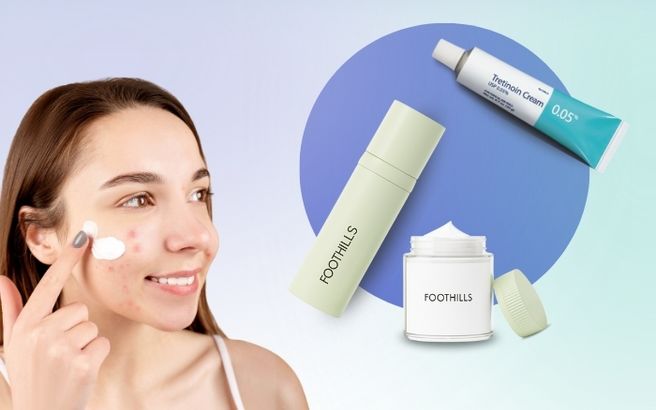Tretinoin gel vs cream comparison: Which is more suitable for your skin concern?
Explore the differences between tretinoin cream and gel, their unique properties, and the different brands available to help you and your online dermatologist decide which formulation may be more suitable to address your specific skin concern.
Table of Content:
What are tretinoin creams and gels used for? | What is the difference between gels, creams and lotions? | Tretinoin cream vs gel | How to get a tretinoin cream or gel? | Who should use gels? | Who should use creams? | Who should use lotions? | Who cannot use tretinoin?
Our commitment to producing high-quality content:
The information presented in this article is based on scientific research and the professional advice of our Content Medical Reviewers, who are experts in the field of Dermatology. How we write our content →
Common Tretinoin Strengths:
If you are interested in a specific tretinoin strength, get started here: Tretinoin 0.025% | Tretinoin 0.05% | Tretinoin 0.01%
If you are looking to combat issues like acne and wrinkles, and improve your overall skin texture, it is likely you have come across tretinoin cream and gel options.
Both are popular topical treatments with proven efficacy, but which one is the better choice for your specific skin problem?
What are tretinoin creams and gels used for?
Tretinoin creams and gels are topical prescription medications used for the treatment of several skin conditions such as:
Acne: Tretinoin is used for mild to severe acne, a common skin condition characterized by the formation of pimples, blackheads, whiteheads, and inflamed nodules. It helps unclog pores, reduce inflammation, and promote the shedding of dead skin cells, thereby improving acne-prone skin1.
Signs of aging: Tretinoin is known for its anti-aging properties. It can stimulate collagen production, which helps to improve skin elasticity and reduce the appearance of fine lines, wrinkles, and photodamage caused by sun exposure2.
Skin texture improvement: Tretinoin can enhance the overall texture of the skin by promoting cell turnover. This leads to a smoother and more even complexion3.
Hyperpigmentation and melasma: Tretinoin can help fade dark spots and hyperpigmentation caused by sun damage or hormonal changes, including conditions like melasma4.
Keratosis pilaris: Tretinoin may be prescribed to treat keratosis pilaris, a common skin condition characterized by rough, bumpy skin, often on the arms, thighs, or buttocks5.
Preventative skin care: In some cases, dermatologists may prescribe tretinoin as a preventative measure for people with a history of acne or early signs of aging to maintain healthy skin and prevent future breakouts or premature aging.
Can I get a tretinoin prescription via Miiskin?
Yes! You can have an online consultation with a dermatologist forn only $59. Medication renewals after that are only $39.
What is the difference between creams, gels and lotions?
The main differences between a cream and a gel lie in their formulation, consistency, and absorption characteristics. These differences impact their effectiveness and suitability for different skin types and conditions. Here are the key distinctions between creams and gels:
Properties of topical creams
Formulation: Skin creams typically contain around 10–50% oil and 5–30% humectant content to create a semi-solid consistency6. They typically contain more oil than gels, giving them a thicker and creamier texture.
Absorption: Creams are absorbed more slowly into the skin compared to gels due to their oil-in-water formulation.
Moisturizing properties: Creams usually have moisturizing properties due to the presence of oils, making them suitable for individuals with dry or sensitive skin. The emollient effect helps to soothe and hydrate the skin.
Suitability: Creams are generally recommended for people with dry or sensitive skin types because they provide added hydration and are less likely to cause dryness or irritation.
Texture: Creams can leave a slight greasy feel on the skin due to their oil content.
Properties of topical gels
Formulation: Gels are water-based formulations that contain alcohol or other drying agents. They have a more fluid consistency compared to creams and contain fewer oils7. Gels are considered to be more appealing cosmetically but they are non-hydrating8.
Absorption: Gels are quickly absorbed into the skin, delivering their active ingredients more rapidly. This fast absorption may lead to a more potent effect on the skin.
Non-comedogenic: Gels are often non-comedogenic, meaning they are less likely to clog pores, making them suitable for individuals with oily or acne-prone skin.
Suitability: Gels are generally recommended for individuals with oily skin or areas where there is hair growth because they are less likely to cause additional oiliness.
Texture: Gels have a lightweight, non-greasy texture and do not leave a residue on the skin
Disadvantage: Easily removed by perspiration
Properties of topical lotions
Formulation: Lotions have a more fluid and liquid-like consistency that contain a combination of water and oil. They have a higher oil content compared to gels.
Absorption: Lotions are absorbed into the skin more slowly due to their oil-in-water formulation. They may leave a slight residue or moisturizing effect on the skin.
Suitability: Lotions are often suitable for individuals with normal to dry skin, as their moisturizing properties can help hydrate and soothe the skin.
Texture: Lotions have a smooth, lightweight texture that is quickly absorbed into the skin, leaving a non-greasy feel. Lotions are better for larger surface area due to ease of application9.
Overall, lotions and gels are better to use over areas with hair growth due to their better spreadability. For example, tretinoin lotion would be most suitable for men with acne over a broad area such as the back or chest.
Tretinoin cream vs gel
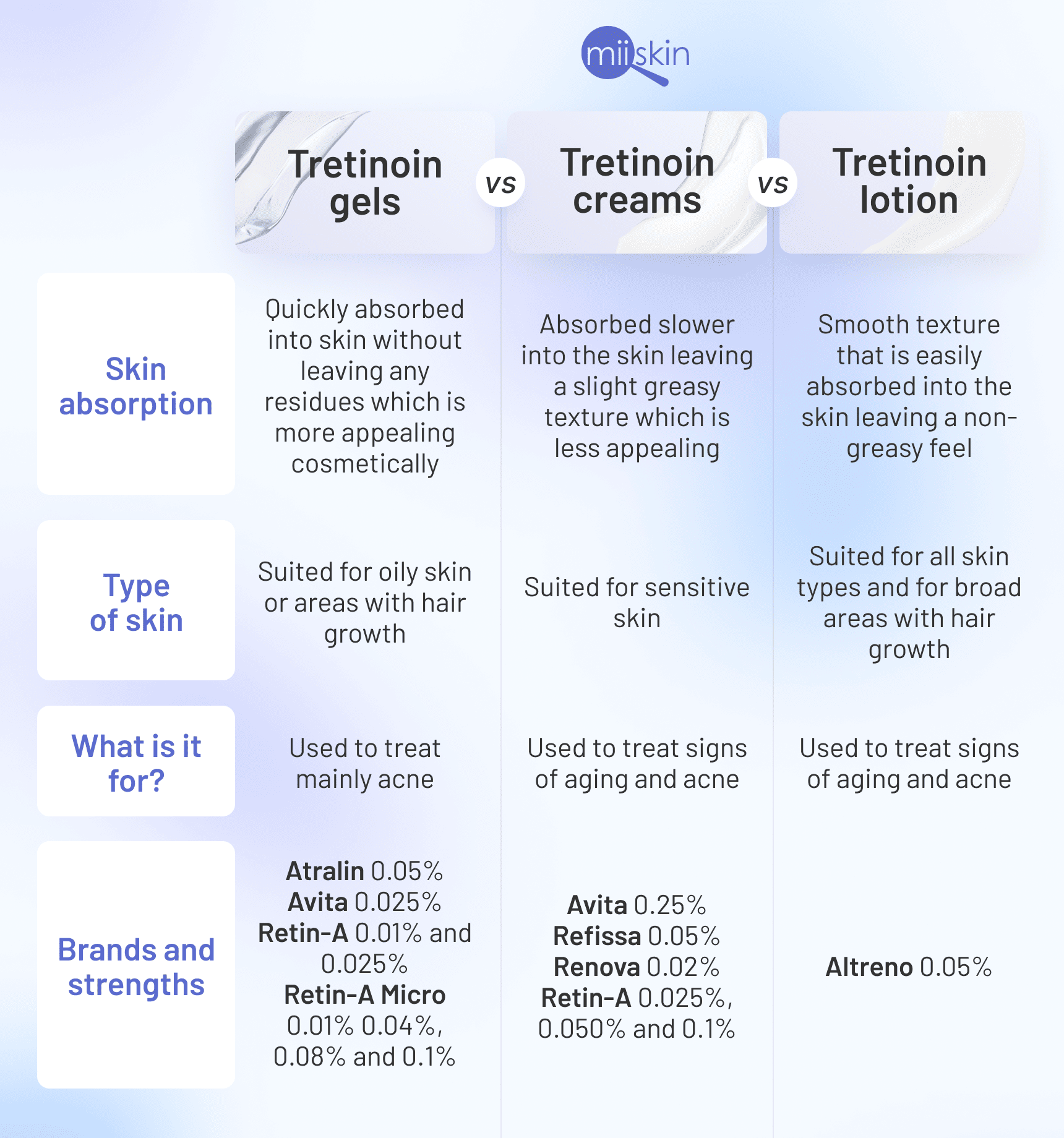
Is Tretinoin gel or cream better?
According to Dr. Alpana Mohta, a board-certified dermatologist, determining whether tretinoin gel or cream is better depends on what your specific skin type needs. The most important aspect of using tretinoin as a treatment is to follow your dermatologist’s advice.
Tretinoin cream vs gel: What is the best form of tretinoin?
A dermatologist may advise tretinoin gel rather than a cream depending on the patient’s skin type, personal preferences, accessibility, or cost, among other factors.
Teenagers who are concerned about having oily skin, for instance, can benefit from using a gel because it can have some drying benefits. On the other hand, adults concerned about aging wrinkles may benefit more from a tretinoin cream.
The selection between tretinoin gel and cream is also influenced by the varying strengths of tretinoin available. Tretinoin comes in a few different concentrations, so a dermatologist will tailor your face treatment to your specific skin needs.
How to get tretinoin cream or gel?
To get a tretinoin cream or gel it is necessary to get a doctor’s prescription. You can do this by having an online consultation with a dermatology provider and requesting a prescription for a tretinoin cream or gel.
How to get a tretinoin coupon?
To get tretinoin at an affordable price, read article on How to get the best tretinoin coupon?
Who should use tretinoin creams?
According to Dr. Mohta, tretinoin creams should be used for the face by patients at least 12 years of age with sensitive skin.
Who should use tretinoin gels?
According to Dr. Mohta, tretinoin gels should be used by patients who are at least 12 years old with oily skin or when the product needs to be applied to larger body areas or areas where there is hair growth.
Who should use tretinoin lotion?
Altreno lotion, which is a more gentle tretinoin formulation can be used by patients with rosacea or sensitive skin and children as young as 9 years of age.
Who should not use tretinoin creams or lotions?
Patients younger than 12 or 9 (depending on the formulation) and women who want to become pregnant, are pregnant or nursing should not use tretinoin as it has teratogenic effects on the fetus.
How to use tretinoin?
Click on the link for a complete dermatologist guide on “How to use tretinoin” including when to apply it, how much to apply, what concentration to use, and how to layer it to avoid skin irritation.
Other tretinoin topics
Everything you need to know about using tretinoin for wrinkles and anti-aging.
Have you heard about the so-called tretinoin purge? When should you expect it to come, how to minimize the symptoms, and how long will it last.
What is the difference between Altreno and Retin-A? Discover the differences between these two tretinoin brands.
Tazarotene vs tretinoin: What are the differences between these two retinoids and learn which one is better for your skin?
Niacinamide and tretinoin are two ingredients that produce remarkable skin effects. Read more in our article: What are the advantages of combining niacinamide and tretinoin?
Ready to enhance your skincare regimen with a specific tretinoin strength? Begin here: Tretinoin 0.025% cream | Tretinoin 0.05% cream | Tretinoin 0.01% cream.
Provider & Prescription Information
Miiskin connects patients with independent dermatologists who provide care through their private practices. Compounded prescriptions can be ordered via Miiskin and are dispensed by Foothills pharmacy. Standard medications can be issued for any local pharmacy.
Article References:
https://www.ncbi.nlm.nih.gov/books/NBK557478/
https://www.ncbi.nlm.nih.gov/pmc/articles/PMC9112391/
https://www.ncbi.nlm.nih.gov/pmc/articles/PMC6791161/
https://www.hopkinsmedicine.org/health/conditions-and-diseases/keratosis-pilaris
https://www.sciencedirect.com/topics/chemistry/skin-cream
http://www.dermweb.com/therapy/common.htm
https://jddonline.com/articles/topical-treatment-for-the-management-of-atopic-dermatitis-S1545961619S0112X
https: //www. ncbi.nlm.nih.gov/pmc/articles/pmc8703425/


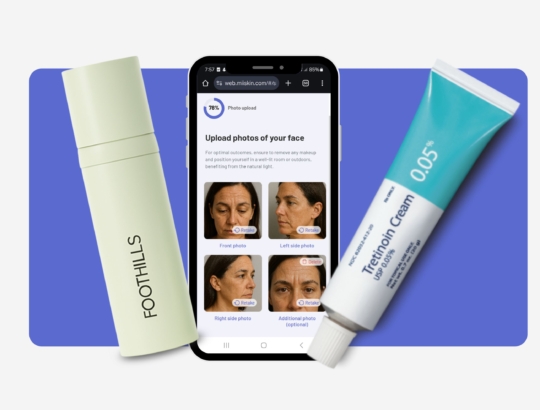
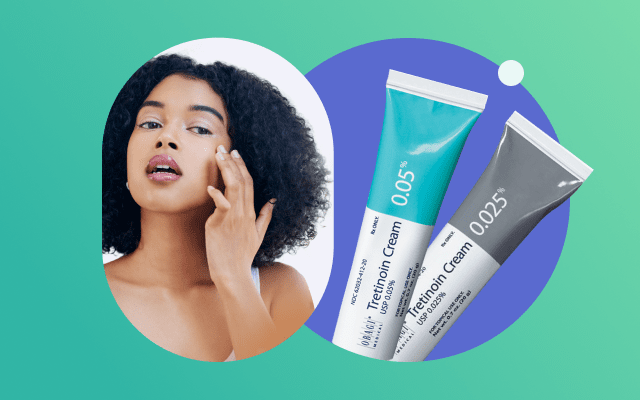
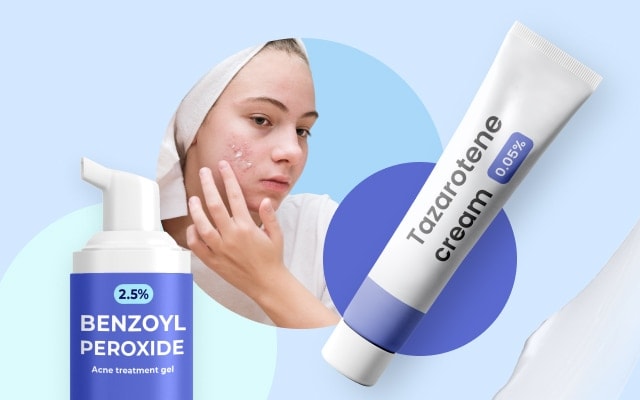
 Want a prescription for tretinoin?
Want a prescription for tretinoin?